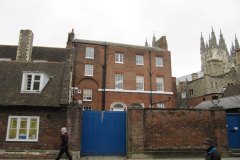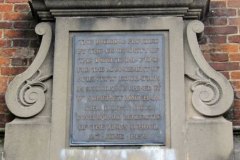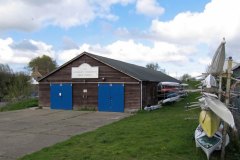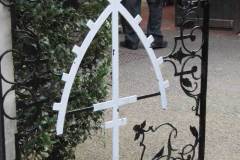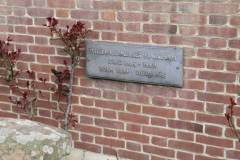Author, novelist, playwright, travel writer
Somerset Maugham was amongst the most popular and successful writers of the inter-war years. Born the sixth son of an English diplomatic lawyer in the British Embassy in Paris, Somerset lost his mother at the age of 8 and his father two years later, and was sent to stay with his uncaring uncle Henry Maugham, Vicar of Whitstable. From here he attended King’s School as a border in Walpole House (image 1). Somerset disliked the school intensely, was teased for his height and poor English, and developed a stammer. He left Kings to study literature, German and philosophy at Heidelberg University and went on to qualify as a doctor at St Thomas’ in 1897, but never practised. His many literary successes included Of Human Bondage, which described his unhappy time at King’s School, and Cakes and Ale which included unflattering remarks about the people of Whitstable. The main Canterbury connections follow:
- The camouflaging of Canterbury and of the school in Of Human Bondage is absurdly thin. Canterbury becomes Tercanbury and Whitstable Blackstable. King’s school keeps its name, and is given a potted history including its pre-conquest foundation, re-launch by Henry VIII, and reference to a poet ‘than whom only Shakespeare had a more splendid genius’ – ie Marlowe. The ‘high brick wall’, ‘look of a prison’ and even the ‘little door in it’ all chime with the present precincts.
- More details of Maugham’s relationship with the school appeared in 1966 with the publication of Somerset and all the Maughams, written by his nephew Robin Maugham. He suggests that the headmaster Dr Shirley played a key role in changing Somerset Maugham’s feelings for the school from apparent hatred to some affection. This arose from Shirley’s policy of co-opting distinguished old boys (including Maugham and Field Marshall Montgomery) as Governors (image 2).
- Another successful writer who attended the same school, albeit 10 years younger than Maugham, was Hugh Walpole. When Maugham published Cakes and Ale in 1930, it was obvious that Alroy Kear in the novel was a barbed caricature of Walpole. Maugham denied this at the time, narrowly avoiding a libel action, but admitted the fact later in life after Walpole’s death.
- In 1953 Maugham paid £3000 for a new boat-house for King’s School built at Pluck’s Gutter on the River Stour near Grove Ferry (image 3).
- Maugham offered to fund a bursary scheme for the education of a working-class boy at the school, but this came to nothing apparently through lack of applicants. The fund was devoted instead to the new science building completed in 1958 (photo).
- In 1948 Maugham presented his book collection – all 1,391 volumes – to the school, each with a suitably worded book plate. His uncle, in his acerbic but observant account of the family, points out that the O.K.S. after Maugham’s name (for Old King’s School) carries a certain irony in that Maugham does not appear in the 1901 list of old boys – ‘Willie did not even bother to pay the subscription of 5 shillings to have his name included’. Other gifts included £5000 for a Library room, and manuscripts of the author’s first (Liza of Lambeth) and last (Catalina) books.
- Maugham died in hospital in Nice in December 1965 aged 90, and was cremated five days later in Marseille. With approval of the Dean and Chapter, his ashes were scattered in a garden in the school grounds on 22 December. The access gate bears his Moorish emblem in wrought ironwork (image 4). A small commemoration plaque marks the event (image 5).
Sources: Bateman et al (2001); Edwards (1957); Oxford Dictionary of National Biography; Robin Maugham (1966); Maugham (1988)

